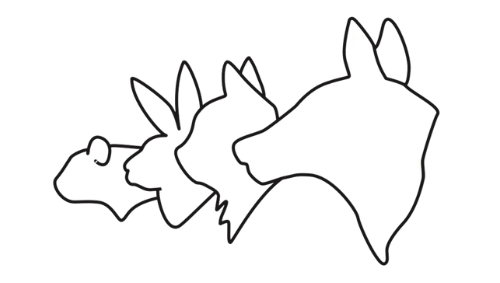Pets are more than just animals; they’re beloved members of our families. We adore their cuddles, wagging tails, and purring companionship. But, like humans, our furry friends can experience anxiety too. Understanding pet anxiety is crucial for ensuring their well-being and keeping your home a safe and comfortable place for them.
In this blog, we’ll explore the signs, causes, and management strategies for pet anxiety.
Signs of Pet Anxiety
Behavioral Indicators
Aggression or Agitation: If you have a once-friendly dog who suddenly snaps or growls at visitors, it can be a sign of anxiety. Dogs typically exhibit this behavior when they feel threatened or overwhelmed by unfamiliar people or situations. This aggression is their way of trying to protect themselves or their owners.
Excessive Barking or Meowing: Unusual and incessant vocalization in your pet, whether it’s barking in dogs or meowing in cats, can be a cry for help. When your pet is anxious, they may vocalize more to communicate their distress. This can be particularly noticeable during thunderstorms, fireworks, or when left alone for extended periods.
Destructive Behavior: One of the more visible signs of pet anxiety is destructive behavior. Pets may chew on furniture, tear pillows, or scratch walls. This is often a way for them to release their pent-up energy and anxiety. It’s crucial to address this behavior and provide appropriate outlets for their energy and anxiety, such as toys and exercise.
Potty Accidents: Unexpected accidents indoors, like urinating or defecating inappropriately, may indicate your pet is feeling anxious. This could be a response to changes in their routine, fear, or separation anxiety. It’s important to rule out any underlying medical issues, but once that’s done, addressing the anxiety is essential to resolve this problem.
Physical Symptoms
Our furry friends can’t communicate their feelings through words, but they often reveal their anxiety through physical symptoms. If you notice your pet exhibiting any of these signs, it might be time to pay closer attention to their emotional well-being.
Pacing: Restlessness and pacing back and forth are clear physical signs of stress in pets. Whether it’s a dog or a cat, if they’re constantly on the move and seem unable to settle down, it could be an indication that something is amiss in their world.
Trembling or Shaking: Uncontrollable trembling or shaking is another physical manifestation of underlying anxiety. This can be particularly noticeable during thunderstorms, fireworks, or other loud and startling events. Your pet’s body is responding to their emotional distress.
Panting or Excessive Drooling: Unusual panting and excessive drooling may indicate that your pet is in distress. If they’re not hot or exerting themselves, and yet they’re panting heavily or producing excessive drool, it’s a sign that something is causing them anxiety.
Loss of Appetite: Just like humans, pets may lose their appetite when they’re anxious. If your pet suddenly shows a disinterest in food, it can be a red flag for anxiety. Keep an eye on their eating habits, as maintaining a healthy diet is essential for their overall well-being.
Understanding these physical symptoms of pet anxiety is vital in helping your furry friend live a happy and stress-free life. By recognizing the signs early and taking appropriate steps, you can ensure your pet’s emotional health and build a stronger bond with them.
Common Causes of Pet Anxiety
Understanding the root causes of their anxiety is the first step in helping them live happier, more relaxed lives.
Separation Anxiety
Understanding the Fear of Being Alone: Some pets become anxious when separated from their owners. The bond between a pet and their human is incredibly strong, and when that connection is severed, it can lead to distress and anxiety in our furry friends.
Coping with Separation Anxiety: Desensitization and gradual separation can help alleviate this issue. Start by leaving your pet alone for short periods and gradually increasing the duration. Providing toys and creating a comfortable space can also help them feel more secure during your absence.
Environmental Stressors
Loud Noises (Thunderstorms, Fireworks): Many pets get frightened by loud sounds. Thunderstorms, fireworks, or even construction noise can trigger anxiety in your pet. The sudden, unexpected loudness can be overwhelming for them.
New Environments or People: Changes in surroundings or the introduction of new people into their lives can trigger anxiety. Pets thrive on routine and familiarity, so abrupt changes can disrupt their sense of security.
Household Changes (Moving, New Pets): Major life events, such as moving to a new home or introducing a new pet to the family, can be unsettling for our furry companions. These transitions can lead to anxiety as they adjust to their new surroundings or cope with sharing their territory.
Past Trauma
The Impact of Past Negative Experiences: Pets, like humans, can be deeply affected by past negative experiences. Whether it’s abuse, neglect, or a traumatic event, these memories can linger, causing anxiety and fear.
Overcoming Trauma: Patience and professional help are essential in these cases. Offering a safe and loving environment, along with behavioral therapy from a trained expert, can help your pet gradually overcome their past traumas and build trust.
Understanding the common causes of pet anxiety is the first step towards helping our furry companions lead happier, more relaxed lives. Whether it’s separation anxiety, environmental stressors, or past trauma, there are solutions and strategies to alleviate their anxiety and strengthen the bond between you and your pet.
Effective Management Strategies for Pet Anxiety
Create a Safe Haven
Designating a Comfortable Space: Provide your pet with a designated safe and comfortable spot to retreat to when they’re feeling anxious. This space should be quiet, cozy, and free from disturbances.
Introducing Comfort Items: Make this space even more inviting by including their favorite blankets, toys, and items that carry your scent. Familiar scents can provide a sense of security.
Gradual Desensitization
Reducing Fear of Triggers: If your pet has specific triggers that cause anxiety, such as loud noises or new environments, work on gradually introducing these triggers in a controlled and positive way. Over time, this can help your pet adapt and become less reactive.
Positive Reinforcement Training: Use positive reinforcement techniques to reward desired behaviors. This can help build your pet’s confidence and reduce their anxiety in stressful situations.
Medications and Supplements
Consultation with a Veterinarian: Consult your veterinarian to discuss potential medication or herbal remedies. They can provide guidance on the most suitable options for your pet’s specific needs.
Options for Medication and Herbal Remedies: There are various safe and effective choices available, including prescription medications and herbal supplements. Your vet can help you choose the right approach.
Professional Help
Seeking Assistance from a Veterinary Behaviorist: For severe cases of pet anxiety, seeking professional help from a veterinary behaviorist can make a significant difference. These experts can diagnose the underlying issues and provide a tailored treatment plan.
Therapy and Training Programs: Veterinary behaviorists can offer specialized therapies and training techniques to help your pet overcome their anxiety. These programs can be highly effective in addressing the root causes of anxiety.
Lifestyle Adjustments
Regular Exercise: Ensure your pet gets regular exercise, as physical activity can help reduce anxiety. A tired pet is often a happier and less anxious pet.
Consistent Routine: Create a consistent daily routine for your pet. Predictability can reduce anxiety as it provides structure and security in their lives.
Dietary Considerations: Some foods are designed to help manage anxiety in pets. Discuss dietary options with your veterinarian to see if a specific diet could benefit your pet.
Stay Calm and Supportive
The Importance of Your Calm Presence: Remember that your pet looks to you for reassurance. Your calm and comforting presence can go a long way in reducing their anxiety.
Patience and Understanding: Be patient and understanding with your furry companion. They’re not just pets; they’re part of your family, and they need your love and support as they navigate their anxiety.
Your pets deserve attention and care when it comes to anxiety. By recognizing the signs and causes of pet anxiety and implementing these management strategies, you can make their lives more comfortable and enjoyable. Remember, a calm, loving presence can go a long way in helping your furry family members overcome their anxiety and enjoy their time with you to the fullest.



